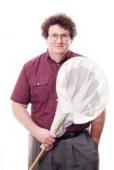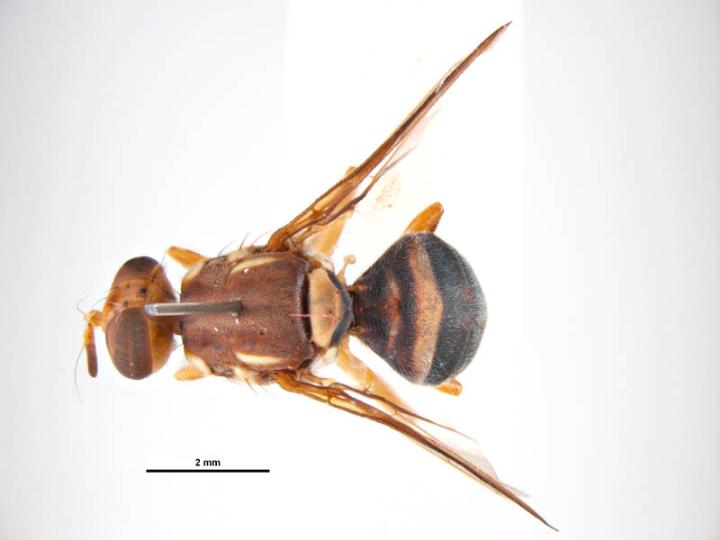| Publication Type | Journal Article [4] | |
| Year of Publication | 2012 | |
| Authors | Garcia-Adeva, J.J. [5]; Reynolds, M. [6] | |
| Journal Title | Ecological Informatics |


| Publication Type | Journal Article [4] | |
| Year of Publication | 2012 | |
| Authors | Garcia-Adeva, J.J. [5]; Reynolds, M. [6] | |
| Journal Title | Ecological Informatics |
| Publication Type | Report [10] | |
| Year of Publication | 2011 | |
| Authors | De Lima, F. [11]; Poogoda, S. [12]; Smallridge, C. [13]; Caldwell, A. [14]; Reynolds, O. [6]; van der Rijt, V. [15]; Clark, S. [16]; Orchard, B. [17] | |
| Pages | 207 |
| Publication Type | Report [10] | |
| Year of Publication | 2011 | |
| Authors | Lindhout, K. [20]; Dalton, S.P. [21]; Jessup, A.J. [22]; Reynolds, O. [6]; Spohr, L.J. [23]; Harris, A. [24]; De Lima, C.P.F. [11]; Poogoda, S. [12] |
The average gross value of Australian Horticulture over the past three years is estimated at over $7 billion per year. Most of this is not consumed close to the source, but is transported to domestic or international markets. Access to markets thus underpins the viability of many rural industries. Unfortunately, market access of commodities which are grown in districts exposed to, or potentially exposed to, fruit fly can be highly restricted. Fruit flies are plant pests of global significance, with adult fruit flies laying their eggs into ripe fruit and the resultant maggots feeding in the fruit flesh. As fruit fly eggs and early instar maggots can be transported in apparently healthy fruits, they are of major concern as plant biosecurity threats for nearly all nations.
In Australia, fruit flies represent the single most significant phytosanitary barrier for domestic and international market access for fruit and vegetable commodities and so directly impact on the viability of many horticultural industries. Of almost $780million of horticultural product exported from Australia during the calendar year 2004, known fruit fly hosts accounted for more than $370million, predominantly citrus ($157million), fresh grapes ($85million), peaches and nectarines ($17million) and apples ($16 million).
Single step disinfestation treatments such as heat, cold or post-harvest chemical application are frequently used to meet market access requirements for fruit flies. However, heat and cold treatments can be detrimental to crop quality for some commodities, while chemical treatments (ie dimethoate), currently used in Australian and New Zealand markets, are likely to be severely restricted in the near future due to toxicological concerns. This means that new approaches to gaining market access for growers need to be developed. A systems approach, which relies on a number of risk reduction steps, may provide a tool to help meet fruit fly phytosanitary requirements.
Upon achieving these outputs, it is anticipated that objectives of subsequent work (beyond the scope of this project) would be:
End users will be growers, as well as Biosecurity Australia when needing scientific data to support market access arguments for horticultural

 The International Symposiums on Fruit Flies of Economic Impor
The International Symposiums on Fruit Flies of Economic Impor
| Publication Type | Report [10] | |
| Year of Publication | 2008 | |
| Authors | Robles-Kelly, A. [34]; Morin, L. [35] | |
| Prepared for | Cooperative Research Centre for National Plant Biosecurity | |
| Pages | 12 | |
| Date | 12/2008 | |
| Institution | CSIRO Ecosystem Sciences [36] | |
| City | ACT |
| Publication Type | Presentation [40] | |
| Year of Publication | 2008 | |
| Authors | Spinner, J. [41]; Kvedaras, O. [42]; Gurr, G. [43]; Jessup, A. [22] | |
| Meeting Name | 3rd International Symposium on the Biological Control of Arthropods |
| Publication Type | Journal Article [4] | |
| Year of Publication | 2009 | |
| Authors | Rattanapun, W. [47]; Amornsak, W. [48]; Clarke, A. [49] | |
| Journal Title | Entomologia experimentalis et applicata | |
| Volume | 131 | |
| Start Page | 243 |
| Publication Type | Journal Article [4] | |
| Year of Publication | 2009 | |
| Authors | Kvedaras, O. [42]; Gurr, G. [43] | |
| Journal Title | Biological Control |
Links:
[1] http://legacy.crcplantbiosecurity.com.au/publications/npb1815
[2] http://legacy.crcplantbiosecurity.com.au/program/preparedness-and-prevention
[3] http://legacy.crcplantbiosecurity.com.au/project/crc30073-surveillance-simulation-platform
[4] http://legacy.crcplantbiosecurity.com.au/publications/research/type/102
[5] http://legacy.crcplantbiosecurity.com.au/publications/research/author/Garcia-Adeva
[6] http://legacy.crcplantbiosecurity.com.au/publications/research/author/Reynolds
[7] http://legacy.crcplantbiosecurity.com.au/publications/npb1723
[8] http://legacy.crcplantbiosecurity.com.au/program/surveillance
[9] http://legacy.crcplantbiosecurity.com.au/project/crc30039-fruit-fly-area-freedom
[10] http://legacy.crcplantbiosecurity.com.au/publications/research/type/109
[11] http://legacy.crcplantbiosecurity.com.au/publications/research/author/De+Lima
[12] http://legacy.crcplantbiosecurity.com.au/publications/research/author/Poogoda
[13] http://legacy.crcplantbiosecurity.com.au/publications/research/author/Smallridge
[14] http://legacy.crcplantbiosecurity.com.au/publications/research/author/Caldwell
[15] http://legacy.crcplantbiosecurity.com.au/publications/research/author/van+der+Rijt
[16] http://legacy.crcplantbiosecurity.com.au/publications/research/author/Clark
[17] http://legacy.crcplantbiosecurity.com.au/publications/research/author/Orchard
[18] http://legacy.crcplantbiosecurity.com.au/publications/npb1722
[19] http://legacy.crcplantbiosecurity.com.au/project/crc30022-female-lures-fruit-fly-trapping
[20] http://legacy.crcplantbiosecurity.com.au/publications/research/author/Lindhout
[21] http://legacy.crcplantbiosecurity.com.au/publications/research/author/Dalton
[22] http://legacy.crcplantbiosecurity.com.au/publications/research/author/Jessup
[23] http://legacy.crcplantbiosecurity.com.au/publications/research/author/Spohr
[24] http://legacy.crcplantbiosecurity.com.au/publications/research/author/Harris
[25] http://www.crcplantbiosecurity.com.au/program/surveillance
[26] mailto:a.clarke@qut.edu.au
[27] http://legacy.crcplantbiosecurity.com.au/bio/clarke
[28] http://legacy.crcplantbiosecurity.com.au/program/impact-management
[29] http://www.dpi.qld.gov.au/cps/rde/dpi/hs.xsl/home_ENA_HTML.htm
[30] http://www.qut.edu.au/
[31] http://www.horticulture.com.au/
[32] http://legacy.crcplantbiosecurity.com.au/publications/npb1558
[33] http://legacy.crcplantbiosecurity.com.au/project/crc30023-smart-trap-scoping-study
[34] http://legacy.crcplantbiosecurity.com.au/publications/research/author/Robles-Kelly
[35] http://legacy.crcplantbiosecurity.com.au/publications/research/author/Morin
[36] http://legacy.crcplantbiosecurity.com.au/publications/research/publisher/CSIRO+Ecosystem+Sciences
[37] http://legacy.crcplantbiosecurity.com.au/content/researching-fruit-fly-europe
[38] http://legacy.crcplantbiosecurity.com.au/publications/npb1453
[39] http://legacy.crcplantbiosecurity.com.au/education-and-training
[40] http://legacy.crcplantbiosecurity.com.au/publications/research/type/1000
[41] http://legacy.crcplantbiosecurity.com.au/publications/research/author/Spinner
[42] http://legacy.crcplantbiosecurity.com.au/publications/research/author/Kvedaras
[43] http://legacy.crcplantbiosecurity.com.au/publications/research/author/Gurr
[44] http://legacy.crcplantbiosecurity.com.au/publications/npb1372
[45] http://legacy.crcplantbiosecurity.com.au/program/diagnostics
[46] http://legacy.crcplantbiosecurity.com.au/project/crc20115-resolving-bactrocera-dorsalis-complex
[47] http://legacy.crcplantbiosecurity.com.au/publications/research/author/Rattanapun
[48] http://legacy.crcplantbiosecurity.com.au/publications/research/author/Amornsak
[49] http://legacy.crcplantbiosecurity.com.au/publications/research/author/Clarke
[50] http://legacy.crcplantbiosecurity.com.au/publications/npb1367
[51] http://legacy.crcplantbiosecurity.com.au/category/tags/fruit-fly?page=1